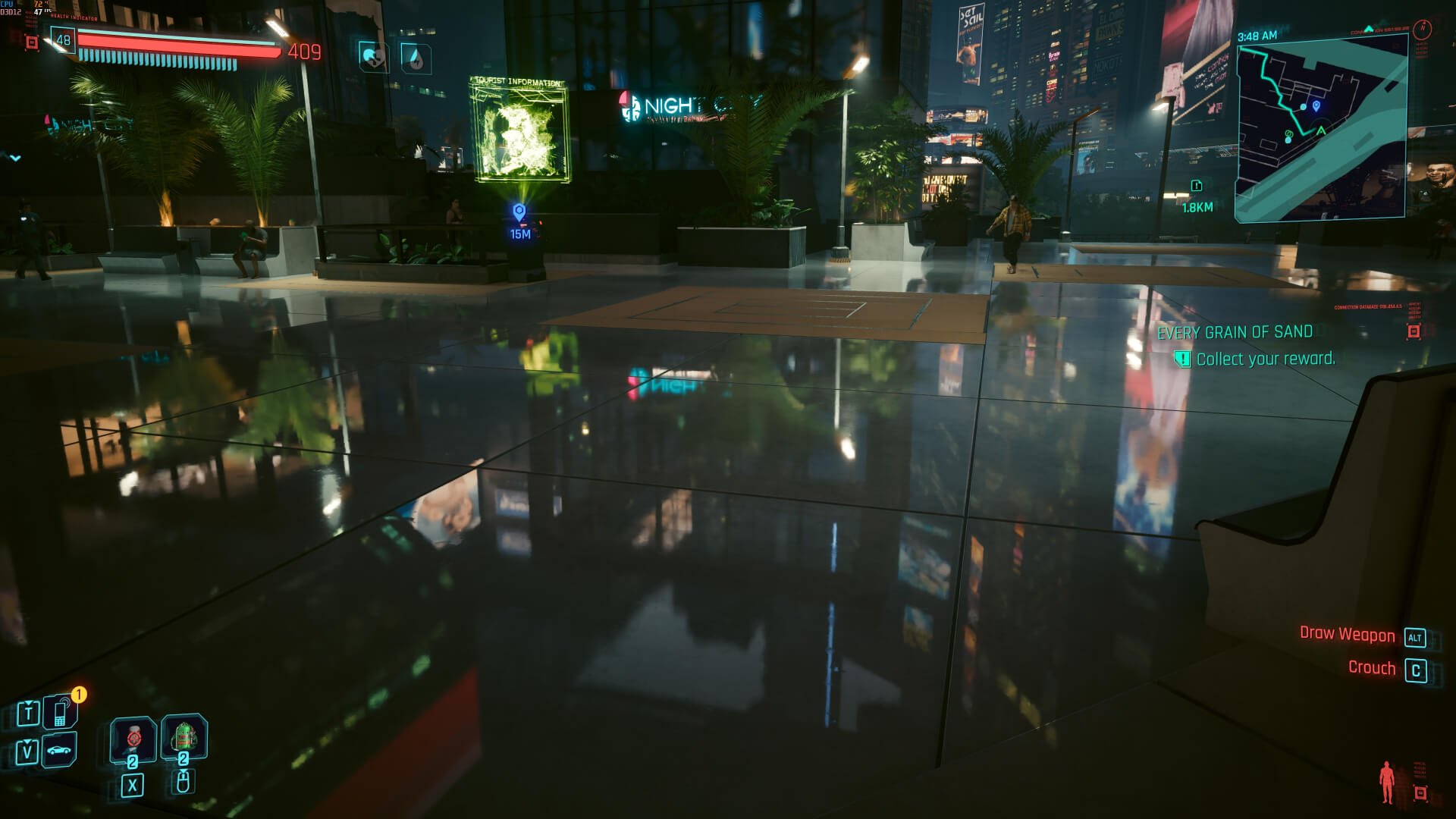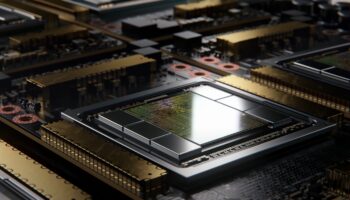AMD’s FSR 3 Frame Generation technology has been gaining momentum, slowly but steadily. Leveraging Fluid Motion Frames Interpolation tech, FSR 3 adds an extra frame between two existing ones, boosting performance by 2 to 3x on average. The FSR 3 algorithm interfaces with the Game UI, Upscaling, and Presentation Systems for its input, producing the generated frame simultaneously with the real one.
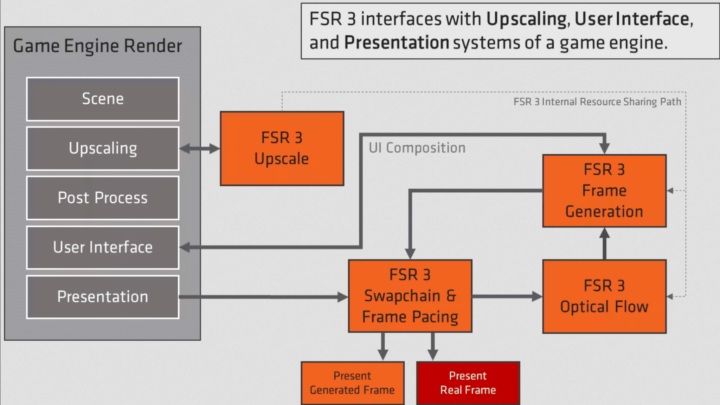
We compared FSR 3 and DLSS 3 in “Immortals of Aveum” and “Starfield” to see how the open-source tech holds up to NVIDIA’s proprietary AI-based solution.
AMD FSR 3 vs NVIDIA DLSS 3: Immortals of Aveum
With that done, let’s have a look at the image quality. We tested FSR 3 in “Immortals of Aveum.” The game features DLSS 3 as well, allowing for a convenient comparison of the two upscaling and frame generation technologies. We’ll rely on four scenes to gauge the IQ with close-ups to determine which upscaler does it better. Click an image to enlarge it.
(click or tap the images for full-resolution variants)


In the above images (click on them to get a high-res version in another window), you can see that FSR 3 looks sharper and more detailed than DLSS 3. This is due to the aggressive sharpening filter used by AMD’s upscaler. With FSR 2, this often resulted in artifacting and loss of detail with complex imagery, but FSR 3 does it elegantly.


Above, you’re looking at a 4x closeup of the earlier image. And AMD’s FSR 3 continues to produce better image quality than DLSS 3. The textures look sharp and well-detailed, and don’t show any signs of pixelation.


Here’s a 7x closeup. Now, we can see the disadvantages of FSR 3. There’s a fair amount of aliasing (jaggies) on the iron bars enveloping the door. At the same time, DLSS 3 still looks pretty washed out and slightly blurry. You’re essentially trading smoothness for detail and aliasing. An important point to note here is that with the newer versions of DLSS 3, the developers need to implement a sharpness filter outside of the Streamline framework. I don’t think Ascendant Studios has done that in Aveum.


Here’s a 10x closeup. It explains why DLSS 3 looks smoother while FSR 3 is sharper. The former has a higher sample count, while the latter leverages an aggressive sharpening filter to improve image quality.
More FSR 3 vs. DLSS 3 comparisons
Below, you’ll find a 7x closeup of the protagonist’s wrist. The skin textures look nearly identical with the two upscalers, but FSR 3 is better at retaining the detail and anti-aliasing.


The below image looks nearly identical on both sides of the slider. The upscalers do a tremendous job of reconstructing a higher-quality image in less than half the time. A closer look is warranted once again.


Despite being 4x magnified, there are only subtle differences between the two. FSR 3 produces a sharper and more detailed output, but DLSS 3 is better at reconstructing the blades of grass and shadows. FSR 3 results in aliased grass and blurry shadow edges.


Here’s a 7x closeup of another bush from the same image. As you can see, FSR 3 produces a better-looking output with more detail and ample sharpness. DLSS 3 looks kind of dull and blurry. However, it does a better job of reconstructing vegetation and shadows. There’s less aliasing and almost no pixelation.


The third scene also looks identical with FSR 3 and DLSS 3. Here, we’ll check the lighting quality with the two upscalers/frame generators.


We used the Performance preset to judge the two upscalers in this case. This shot shows the fundamental difference between FSR 3 and DLSS 3. FSR 3 is sharper with seemingly more detail than its rival. However, it’s prone to pixelation and aliasing along the edges of small objects. DLSS 3 produces a cleaner image, albeit with lesser detail. Luckily for AMD, the pixelation and aliasing isn’t notable. A thorough analysis of the image with 5-7x magnification will reveal these flaws.
Even More AMD FSR 3 vs. NVIDIA DLSS 3 Comparisons
(click or tap the images for full-resolution variants)


I won’t even bother. Both look the same in a still comparison.


In the below 4x closeup, FSR 3 is notably sharper than DLSS 3 with a more detailed image quality. There may be a fair bit of minute aliasing along the edges of the vegetation, but it’s close to invisible.


The 7x closeup reveals some interesting details. First, DLSS 3 still looks too soft with little to no aliasing. Second, FSR 3 retains much more detail even with this much magnification. However, it does produce some dark pixels which can be seen scattered across the plant. These are faulty pixels that the upscaler/FG should have rejected, but for whatever reason weren’t.


AMD FSR 3 vs NVIDIA DLSS 3: Performance vs Quality
With that stuff out of the way, here are some comparisons of FSR 3 “Performance” and “Quality“. Spoiler alert, they look very similar. Rather remarkable how far we’ve come in such a short period. From spatial upscalers worse than cubic to near-native quality with less than a quarter of the pixels.






The main differences are visible around the crevices and edges where the shadows lie. The Quality preset is better with the shadows due to the higher input sample count. “Performance” produces a few artifacts, but nothing that’ll be visible in fast-paced gameplay.






Above, you can see a comparison of DLSS 3 “Performance,” “Quality” and FSR 3 “Native AA” (Native + AA). FSR 3 “Native AA” produces the best output, especially with respect to the shadows and post-processing AA. DLSS 3 “Quality” requires a sharpening filter for proper representation, but even then a bit of detail (versus FSR 3 Native AA) will likely be lost.
AMD FSR 3 vs DLSS 3.5 in Starfield
Starfield features DLSS 3.5 Frame Generation and FSR 3.0. We’ll compare the two at 1440p using the “Quality” preset of the two technologies. The graphics quality was set to “Ultra,” and the starting area was used for the screenshots.


The primary difference between NVIDIA DLSS 3.5 and AMD FSR 3 (without zooming in) is that the latter looks more grainy, a side-effect of its aggressive sharpening filter. Disabling film grain can remedy this in most cases. Apart from that, DLSS 3.5 uses a “smoother” approach that focuses more on retaining complex object detail, while FSR 3 achieves the same using a mix of interpolation and sharpening.
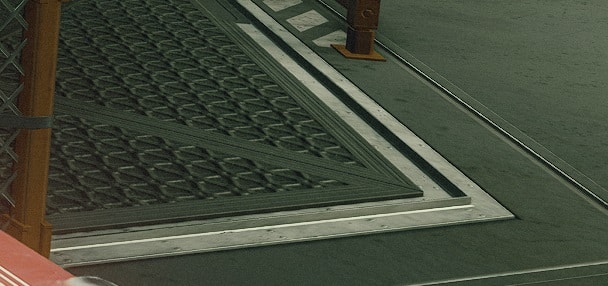
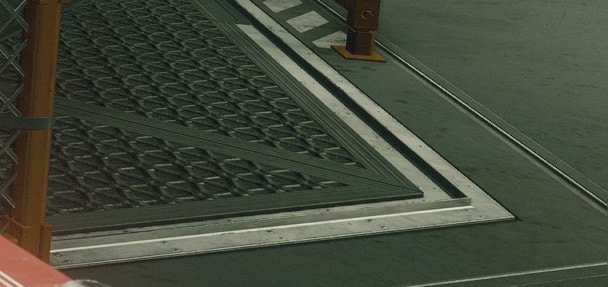
The above comparison is a 600% close-up of the floor textures. Apart from some minor graininess on the FSR 3 side, the two look almost identical. DLSS 3 produces cleaner edges, while FSR 3 is better at retaining the texture detail of coarse objects.


We see the same result for the grills above. FSR 3 is sharper but aliased, while DLSS 3 is smoother but slightly smudged.


Ship interiors are even harder to tell apart. FSR 3 and DLSS 3.5 both do an excellent job of upscaling and interpolating the frames. NVIDIA’s solution is slightly better at preserving intricate edges, indentations, and (particularly) thin objects. Note the ship ventilation in the above comparison. FSR 3 looks blurry, and the film grain makes it worse.
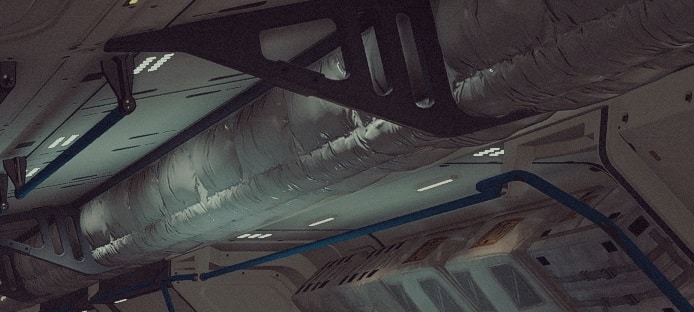
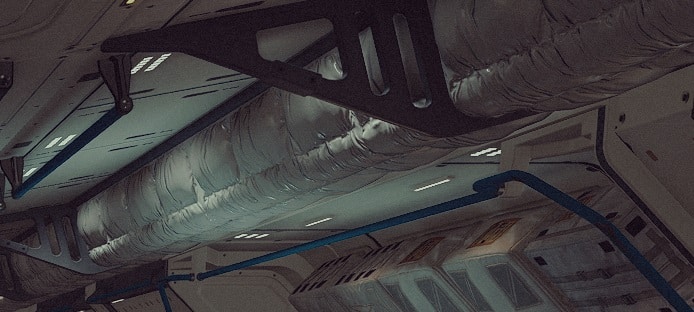
A close-up shows that DLSS 3 better retains the folds and intersections covering the ventilation. It also recreates the wall/ceiling patterns with increased detail, while FSR 3 loses out on the finer etchings.


This comparison is impossible to tell apart. At least I can’t tell which one is which without zooming in. Even a 400% zoom-in doesn’t help differentiate between the two frame generation technologies. The lighting on the stairs is the only noteworthy detail missing on the FSR 3 side, while DLSS 3 retains it uniformly.


In the above comparison, the images produced by AMD’s FSR 3 and NVIDIA DLSS 3 stand out. FSR 3 fails to retain much of the shadow detail, especially the ones around vegetation. Rocks and boulders are also affected, but not as much. This can be reproduced in the below shot and its close-up.


In the below comparison, the vegetation loses most of its shadowing with FSR 3, while DLSS 3.5 looks perfectly fine. The rock formations are better off but lose their boundaries.


Starfield’s FSR 3 implementation looks nearly as good as DLSS 3.5. The issue with the film grain has to be sorted, and the vegetation shadows need saving. Everything else is ready to (randomly) generate thousands of bland, open-world environments with similar quest designs and building placements.
